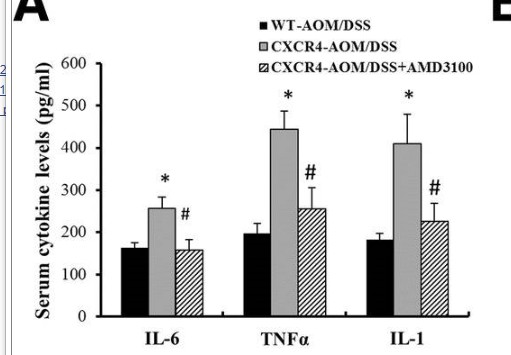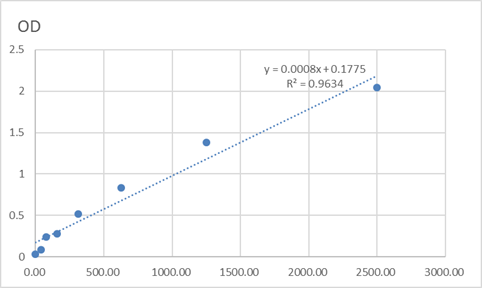
Catalog: KA3361C
Size
Price
Status
Qty.
96well
$330.00
In stock
0
Add to cart


Collected


Collect
Main Information
Reactivity
Human
Applications
ELISA
Conjugate/Modification
Unmodified
Detailed Information
Storage
2-8°C/6 months,Ship by ice bag
Modification
Unmodified
Detection Method
Colorimetric
Related Products
Antigen&Target Information
Gene Name:
PML
show all
Protein Name:
Protein PML
show all
Other Name:
PML ;
MYL ;
RNF71 ;
TRIM19 ;
Protein PML ;
Promyelocytic leukemia protein ;
RING finger protein 71 ;
Tripartite motif-containing protein 19
MYL ;
RNF71 ;
TRIM19 ;
Protein PML ;
Promyelocytic leukemia protein ;
RING finger protein 71 ;
Tripartite motif-containing protein 19
show all
Background:
alternative products:Additional isoforms seem to exist,disease:A chromosomal aberration involving PML may be a cause of acute promyelocytic leukemia (APL). Translocation t(15;17)(q21;q21) with RARA. The PML breakpoints (type A and type B) lie on either side of an alternatively spliced exon.,function:Probable transcription factor. May play an important role in recruitment of ELF4 into PML nuclear bodies.,PTM:Sumoylated on all three sites is required for nuclear body formation. Sumoylation on Lys-160 is a prerequisite for sumoylation on Lys-65. The PML-RARA fusion protein is not sumoylated.,PTM:Ubiquitinated; mediated by SIAH1 or SIAH2 and leading to its subsequent proteasomal degradation.,similarity:Contains 1 RING-type zinc finger.,similarity:Contains 2 B box-type zinc fingers.,subcellular location:Sumoylated forms localize to the PML nuclear bodies. The B1 box and the RING finger are also required for this nuclear localization. Isoforms lacking a nuclear localization signal are cytoplasmic.,subunit:Interacts with SIRT1, TOPBP1, TRIM27 and TRIM69. Interacts with the C-terminus of ELF4. Interacts with Lassa virus Z protein and rabies virus phosphoprotein.,
show all
Function:
protein import into nucleus, translocation, cell cycle checkpoint, DNA damage checkpoint, regulation of cell growth,response to hypoxia, positive regulation of defense response to virus by host, immune system development,regulation of immune effector process, regulation of response to biotic stimulus, DNA metabolic process, DNA repair,transcription, regulation of translation, protein complex assembly, protein amino acid phosphorylation, protein targeting, protein import into nucleus, phosphorus metabolic process, phosphate metabolic process, intracellular protein transport, nucleocytoplasmic transport, apoptosis, induction of apoptosis, activation of caspase activity,response to DNA damage stimulus, DNA damage response, signal transduction by p53 class mediator resulting in cell cycle arrest, response to oxidative stress, nucleus organization, cell cycle, cell cycle arrest, mitotic cell cycle checkpoint,cell surface receptor linked signal transduction, enzyme linked receptor protein signaling pathway, transmembrane receptor protein serine/threonine kinase signaling pathway, transforming growth factor beta receptor signaling pathway, common-partner SMAD protein phosphorylation, SMAD protein nuclear translocation, intracellular signaling cascade, regulation of mitotic cell cycle, aging, cell aging, protein localization, cell death, negative regulation of cell proliferation, regulation of cell size, induction of apoptosis by intracellular signals, DNA damage response, signal transduction resulting in induction of apoptosis, response to radiation, response to UV, response to light stimulus,response to abiotic stimulus, negative regulation of biosynthetic process, response to organic substance, response to ionizing radiation, response to gamma radiation, negative regulation of macromolecule biosynthetic process,regulation of cell cycle process, positive regulation of macromolecule metabolic process, negative regulation of macromolecule metabolic process, posttranscriptional regulation of gene expression, negative regulation of gene expression, positive regulation of organelle organization, regulation of cell death, positive regulation of cell death,positive regulation of peptidase activity, programmed cell death, induction of programmed cell death, protein transport, death, phosphorylation, negative regulation of transcription, negative regulation of angiogenesis, protein import, negative regulation of translation, cell cycle process, hemopoiesis, myeloid cell differentiation, negative regulation of cell growth, DNA damage response, signal transduction by p53 class mediator, intracellular receptor-mediated signaling pathway, nuclear body organization, PML body organization, regulation of histone modification,positive regulation of histone modification, regulation of histone deacetylation, positive regulation of histone deacetylation, negative regulation of cellular biosynthetic process, regulation of protein modification process, positive regulation of protein modification process, DNA integrity checkpoint, G1 DNA damage checkpoint, G1/S transition checkpoint, regulation of protein stability, negative regulation of translation in response to stress, regulation of cellular protein metabolic process, negative regulation of cellular protein metabolic process, positive regulation of cellular protein metabolic process, maintenance of protein location in cell, regulation of cellular component size,negative regulation of translation in response to oxidative stress, regulation of organelle organization, regulation of chromosome organization, protein localization in organelle, cellular response to stress, response to cytokine stimulus,protein localization in nucleus, cellular response to oxidative stress, cellular protein localization, regulation of growth,regulation of cell proliferation, DNA damage response, signal transduction, DNA damage response, signal transduction by p53 class mediator resulting in induction of apoptosis, regulation of apoptosis, positive regulation of apoptosis,regulation of programmed cell death, positive regulation of programmed cell death, positive regulation of catalytic activity, positive regulation of caspase activity, regulation of caspase activity, regulation of translation in response to stress, regulation of translation in response to oxidative stress, regulation of multi-organism process, macromolecular complex subunit organization, positive regulation of molecular function, establishment of protein localization,maintenance of protein location, regulation of MHC class I biosynthetic process, regulation of transcription, regulation of angiogenesis, negative regulation of cell cycle, negative regulation of cell size, negative regulation of growth,negative regulation of mitotic cell cycle, negative regulation of nucleobase, nucleoside, nucleotide and nucleic acid metabolic process, intracellular transport, retinoic acid receptor signaling pathway, hemopoietic or lymphoid organ development, regulation of defense response to virus, regulation of defense response to virus by host, protein stabilization, positive regulation of cellular component organization, nuclear transport, nuclear import, negative regulation of nitrogen compound metabolic process, maintenance of location, positive regulation of protein metabolic process, negative regulation of protein metabolic process, regulation of hydrolase activity, positive regulation of hydrolase activity, maintenance of protein location in nucleus, maintenance of location in cell, regulation of cell cycle,regulation of peptidase activity, regulation of endopeptidase activity, macromolecular complex assembly, protein complex biogenesis, response to oxygen levels, cellular macromolecule localization,
show all
Cellular Localization:
Nucleus. Nucleus, nucleoplasm. Cytoplasm . Nucleus, PML body . Nucleus, nucleolus. Endoplasmic reticulum membrane ; Peripheral membrane protein ; Cytoplasmic side . Early endosome membrane; Peripheral membrane protein; Cytoplasmic side. Isoform PML-1 can shuttle between the nucleus and cytoplasm. Isoform PML-2, isoform PML-3, isoform PML-4, isoform PML-5 and isoform PML-6 are nuclear isoforms whereas isoform PML-7 and isoform PML-14 lacking the nuclear localization signal are cytoplasmic isoforms. Detected in the nucleolus after DNA damage. Acetylation at Lys-487 is essential for its nuclear localization. Within the nucleus, most of PML is expressed in the diffuse nuclear fraction of the nucleoplasm and only a small fraction is found in the matrix-associated nuclear bodies (PML-NBs). The transfer of PML from the nucleoplasm to PML-NBs depends on its phosphorylation and sumoylation. The B1 box and the RING finger are also required for the localization in PML-NBs. Also found in specific membrane structures termed mitochondria-associated membranes (MAMs) which connect the endoplasmic reticulum (ER) and the mitochondria. Sequestered in the cytoplasm by interaction with rabies virus phosphoprotein.
show all
Signaling Pathway
Human Diseases >> Cancer: overview >> Pathways in cancer
Human Diseases >> Cancer: overview >> Transcriptional misregulation in cancer
Human Diseases >> Cancer: specific types >> Acute myeloid leukemia
Genetic Information Processing >> Folding, sorting and degradation >> Ubiquitin mediated proteolysis
Reference Citation({{totalcount}})
Catalog: KA3361C
Size
Price
Status
Qty.
96well
$330.00
In stock
0
Add to cart


Collected


Collect
Recently Viewed Products
Clear allPRODUCTS
CUSTOMIZED
ABOUT US
Toggle night Mode
{{pinfoXq.title || ''}}
Catalog: {{pinfoXq.catalog || ''}}
Filter:
All
{{item.name}}
{{pinfo.title}}
-{{pinfo.catalog}}
Main Information
Target
{{pinfo.target}}
Reactivity
{{pinfo.react}}
Applications
{{pinfo.applicat}}
Conjugate/Modification
{{pinfo.coupling}}/{{pinfo.modific}}
MW (kDa)
{{pinfo.mwcalc}}
Host Species
{{pinfo.hostspec}}
Isotype
{{pinfo.isotype}}
Product {{index}}/{{pcount}}
Prev
Next
{{pvTitle}}
Scroll wheel zooms the picture
{{pvDescr}}








.jpg)










